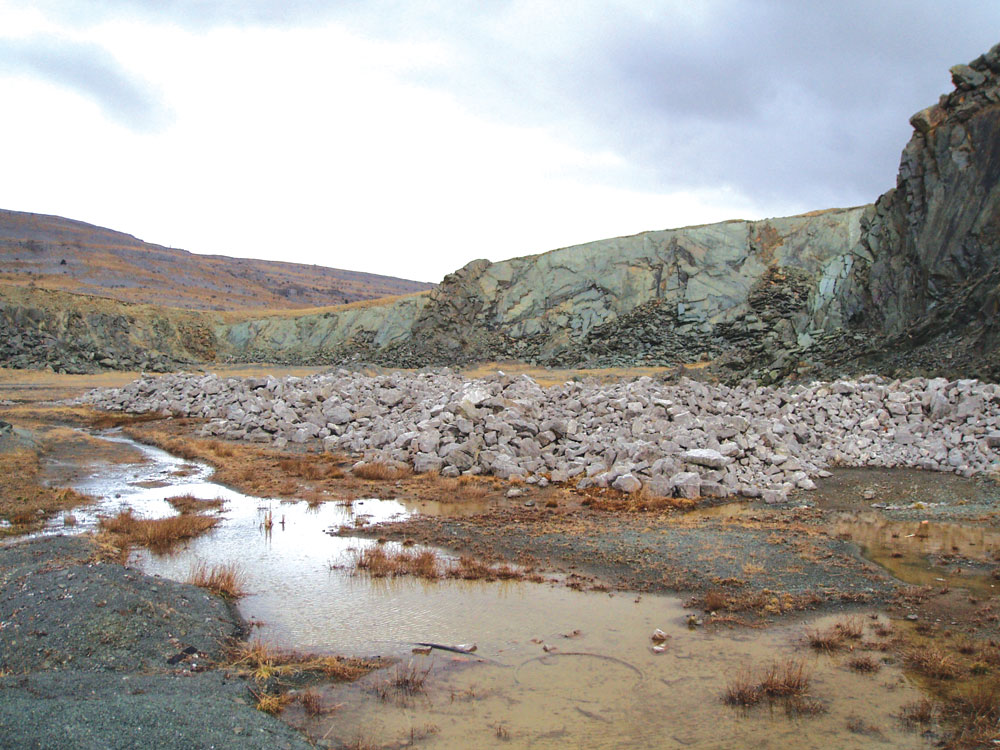The Mining Waste Directive

New responsibilities for mine and quarry operators
For operators of mines and quarries in England and Wales, the rules on what they can do with their waste changed as of 7 July 2009 when the Mining Waste Directive came into force.
The aim of the Directive is to protect the environment from extractive waste, by ensuring that extractive industries manage such waste appropriately throughout the life cycle of the site. The Environment Agency is one of the competent authorities delivering the Mining Waste Directive, together with the Health and Safety Executive, local emergency planners and mineral planners.
The new regulatory approach aims to offer a range of regulation that is proportionate to the risk of the activity. Operators should be able to maximize the re-use of relevant information already prepared for other regulations in order to minimize administrative costs.
New mining operations that have been running since 1 May 2008 may need to develop a waste-management plan and apply for an environmental permit with the Environment Agency. The timescale for applications for new operations has been extended until 30 November 2009, provided that the Environment Agency has been contacted.
Existing mining operators (those that were running before 1 May 2008), without a mining waste facility, have until 30 December 2010 to apply for an environmental permit, while operators with a mining waste facility have until 1 May 2011. Beyond these dates, failure to possess an environmental permit may result in legal action as well as high costs should a mining or quarrying company have to mitigate environmental impacts.
It is, therefore, essential that mining and quarrying operators are aware of the changes in the law and ensure that they are taking steps to comply with the new regulations.
What is the Mining Waste Directive and what does it affect?
The Regulations require the permitting of mining waste operations. A mining waste operation is defined as the management of extractive waste. Extractive waste is produced through the prospecting, extraction, treatment and storage of mineral resources and the working of quarries. This material includes: tailings, such as waste solids or slurries left over after the minerals have been removed and treated; waste rock and overburden, such as material that is moved during extraction operations; and topsoil.
The Environment Agency is working with the CBI Minerals Group to agree a procedure to assess how recent European case law applies to extractive wastes. The resultant procedure may result in some extractive materials being assessed as not being waste.
Waste that does not come directly from extractive operations, eg food waste, waste oil, waste vehicles and waste batteries, is subject to the same requirements as waste from other industry sectors and, as such, must comply with the Landfill Directive and the Waste Framework Directive.
Businesses impacted include surface and underground mines, quarries, including boreholes, and those involved in the treatment of extracted material.
There are some exemptions for older mining waste facilities that closed before 1 May 2008 or are closing using agreed procedures and will be closed by 31 December 2010.
Key requirements of the Mining Waste Directive
The key requirement of the Mining Waste Directive is a Waste Management Plan. This plan is made binding through the environmental permit. The plan sets out the type and quantity of the waste produced, how it is produced and whether there is any treatment performed on it. It assesses the risk to the environment and human health from that waste, and the preventative measures operators will take to minimize its impact. If the waste is deposited for longer periods it is called a mining waste facility.
Mining waste facilities are defined in the Mining Waste Directive as ‘any area designated for the accumulation or deposit of extractive waste…’. This can include heaps, ponds and any associated structures, such as dams. There will be a mining waste facility where there are areas designated for the accumulation or deposition of extractive waste for longer than:
- Six months for facilities for unexpectedly generated hazardous waste;
- One year for facilities for non-hazardous, non-inert waste; and
- Three years for facilities for inert waste, unpolluted soil, non-hazardous prospecting waste and waste from the peat industry.
These facilities require procedures for constructing, closing and managing closed mining waste operations.
The full requirements can be reduced for unpolluted soil, non-hazardous prospecting waste and waste from the peat industry, and, therefore, the Environment Agency is developing procedures for these materials that will not involve an environmental permit.
Major accident prevention policies, safety management plans and internal emergency plans will be required for all mining waste operations with mining waste facilities defined as Category A (ie with potential for a major accident or wastes of a hazardous nature). Also, from 2014, a financial guarantee will be required for Category A mining waste facilities and mining waste facilities for hazardous wastes.
A summary of the requirements for different activities is provided by the Defra draft Guidance on the Mining Waste Directive. Further information on this is available at: www.defra.gov.uk
Further information on how to apply for a permit can be found at the Environment Agency website at: www.environment-agency.gov.uk/epr


